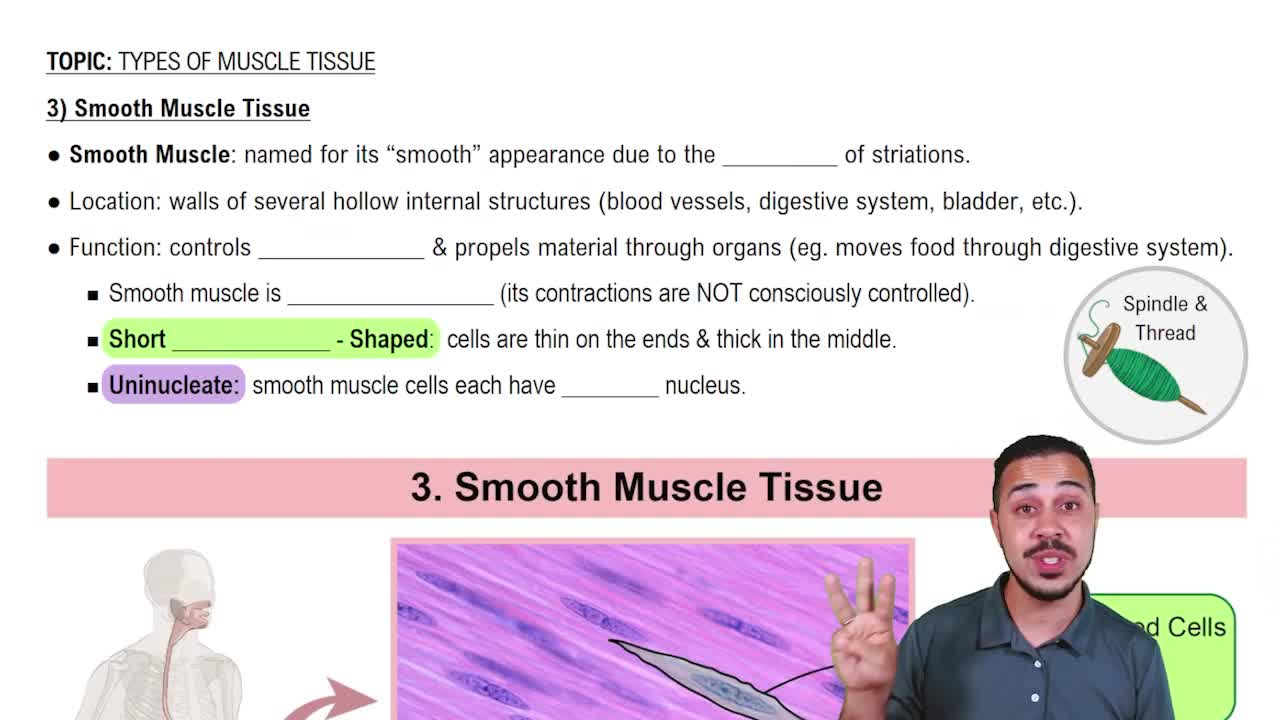A muscle fiber relaxes when:
a. The concentration of Ca2+ in the cytosol returns to resting levels.
b. The supply of ATP is exhausted.
c. Ca2+ flood the cytosol.
d. Acetylcholine is released from the axon terminal and the sarcolemma depolarizes.
 Verified step by step guidance
Verified step by step guidance Verified video answer for a similar problem:
Verified video answer for a similar problem:



 4:53m
4:53mMaster Overview of Muscle Contraction with a bite sized video explanation from Bruce Bryan
Start learning